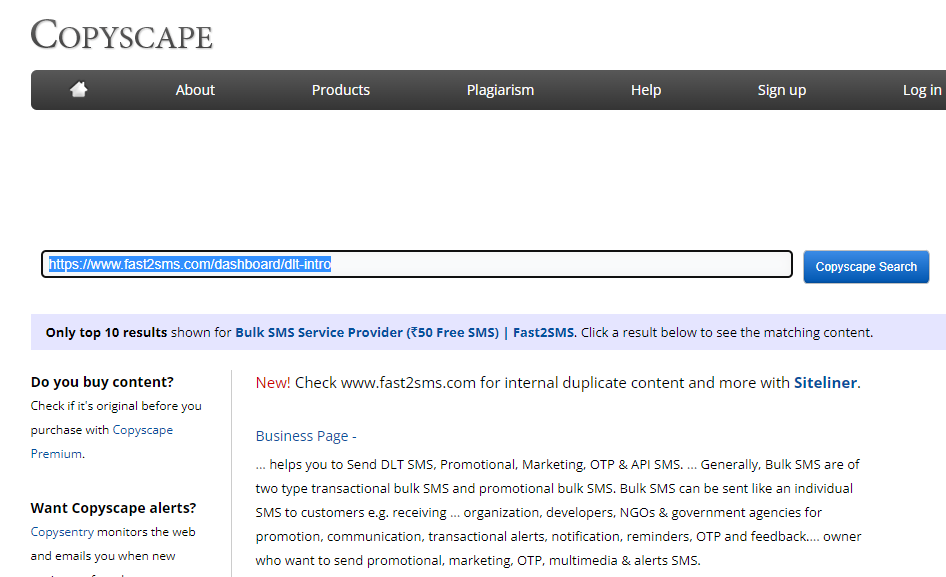Content auditing is the process of collecting, organizing, and analyzing all the content on the website. The main aim is to get a view of how your content is working for your audiences. It examines the content strategy and evaluates the results to provide clear insights.
The content audit reports show opportunities for better optimization of on-page SEO. Hence its only focus is content optimization and not page optimization.
Page Contents:
How To Run A Content Audit?
Running a content audit is a time-consuming task. You need to do a lot of surveys and gather a lot of data. Everything becomes very easy to manage when you are organized. Following is a guide to make content audit easy and effective for you.
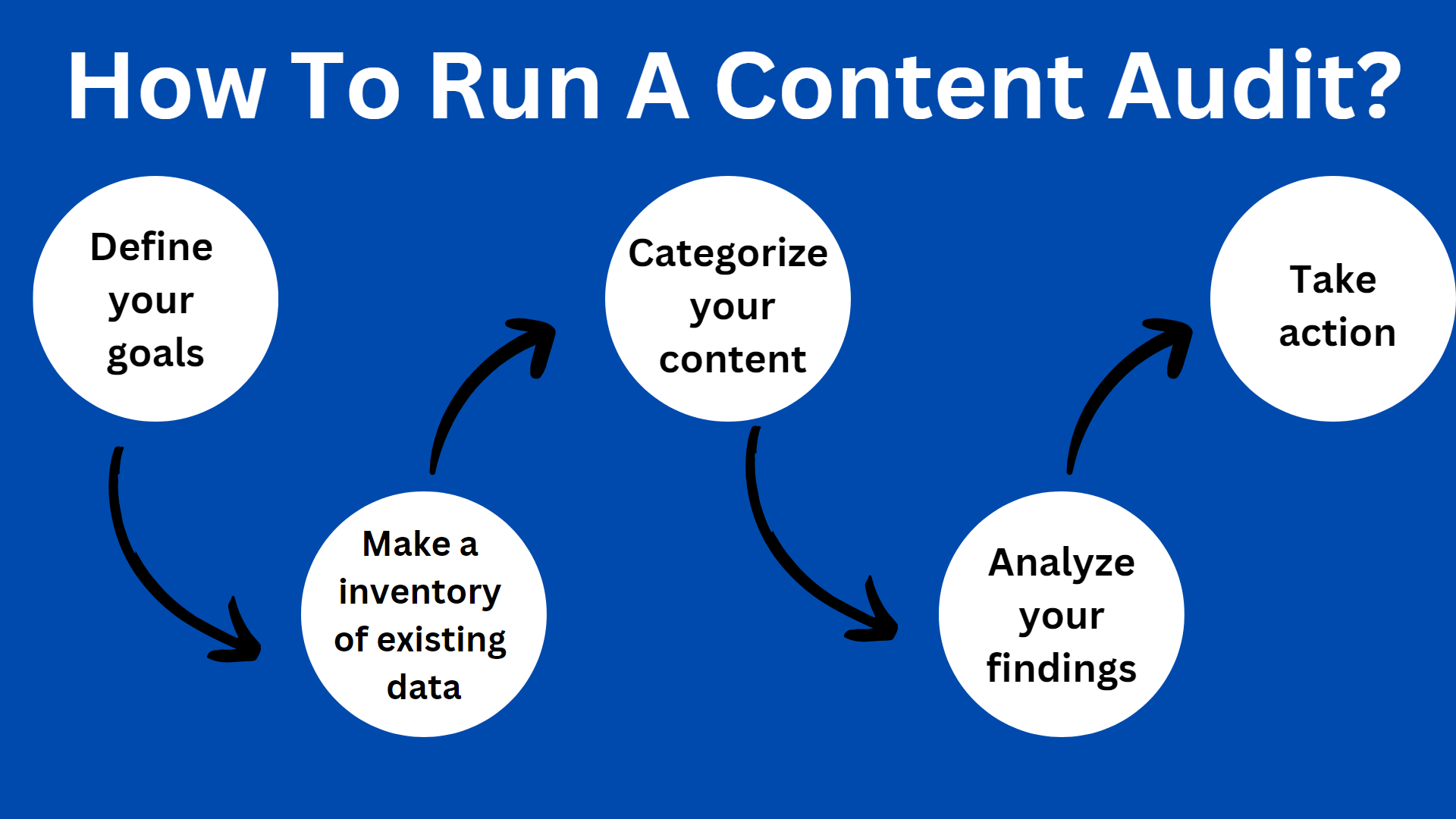
1. Know your goals and metrics:
Think about your goals, and what metrics the audits should give. The goals are to improve SEO results, increase audiences engagements, and improve conversion rates.
Once you decide on your goals, match them with relevant content metrics. The content metrics include SEO metrics, user behavior, engagements, and sales.
2. Build your content inventory:
A content inventory is the list of all the content available on your website. For creating an effective content inventory there are three main steps:
- Know which content you want to audit
- Collect everything your website has related to the content you want to review
- Organize the collected data in a spreadsheet.
Isn’t this simple? It is the most time-consuming step and you can use the same inventory every time you audit your content. You can also use a content template for building an inventory.
The collection of data includes collecting URLs, images, audio, videos, content type, content format, word count, page titles, and other such elements of your website content. There are many tools available for building inventory, which we will discuss later in this article.
3. Analyze your data:
Once you have collected the data and organized it. The next step is to audit your data. here you analyze your content on various metrics. you can use different tools to conduct audits on various metrics. The following metrics are received after conducting audits.
- Images
- Meta descriptions
- Headlines
- Keywords
- Page purpose
- Page title
- Internal and external links
- Content text, format, type
- Page speed
- Mobile-friendliness
- Readability
- URLs
- Audios & videos
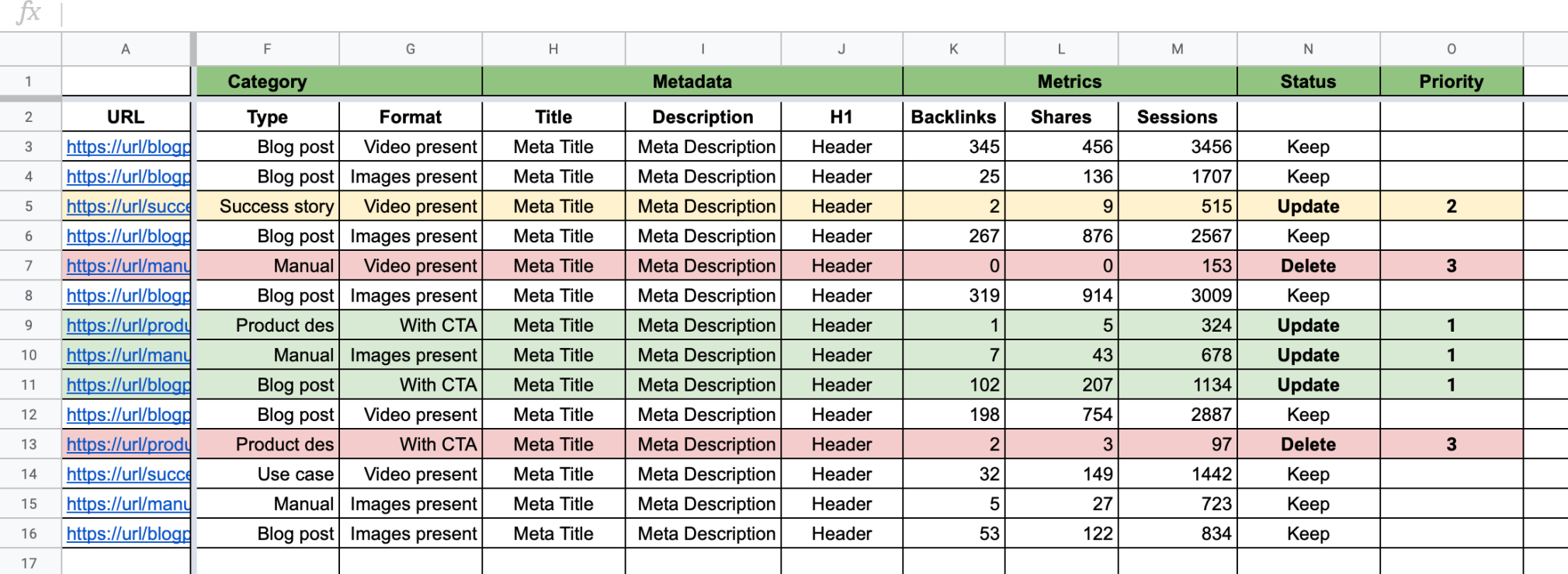
After auditing content. Organize the result in a spreadsheet. The spreadsheet will allow us to figure out what is working and what is not for the website. You will figure out what you can improve or what are you missing out on. You will also be able to know user behaviors. This will help you improve your SEO and conversion rates.
4. Create your action plan:
Now that you know all the flaws of your content. You are ready with the action plan to improve your SEO and content. While planning updates, compare your audit report with your business goals. Then try to fill in the content gaps. This will improve your content.
You can add a column in your spreadsheet for remarks on improvement. Schedule frequent audits to maintain and update your content.
11 Best Tools For Content Audit
There are so many tools we can use for content audits. Here is the best tools list for saving time and giving an accurate audit report.
1. Screaming frog
Screaming Frog is a web crawler that helps to improve on-site SEO. You can crawl the first 500 URLs free of cost and access unlimited plants for $209/year. You can also schedule crawlers for conducting audits at regular intervals.
It immediately crawls the websites and collects URLs. The screaming frog spiders find broken links and detect 404 errors. They find temporary or permanent redirects. They analyze the meta descriptions and page titles and identify the too-long, too-short, missing, or duplicate ones.
They detect all the duplicate URLs. They integrate with Google Analytics, Google search console, and page speed insights to fetch information about users and performance data.
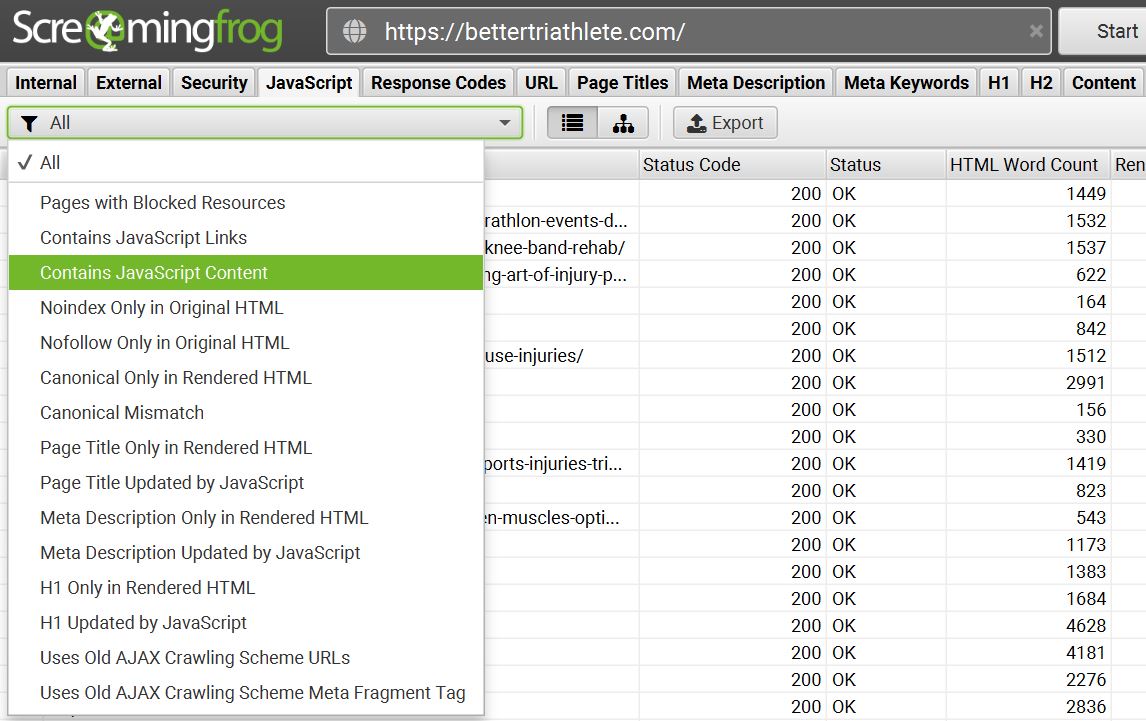
2. Yoast plugin
If you are a WordPress user, Then the Yoast plugin is the must-have tool. The Yoast plugin analyzes almost everything about your content. The Yoast plugin has a writing audit feature that helps to optimize your content for the targeted keyword.
They continuously audit your content while writing the blog and suggest better readability. In addition, Yoast resolves all the optimization problems for the structure and article of your blog.
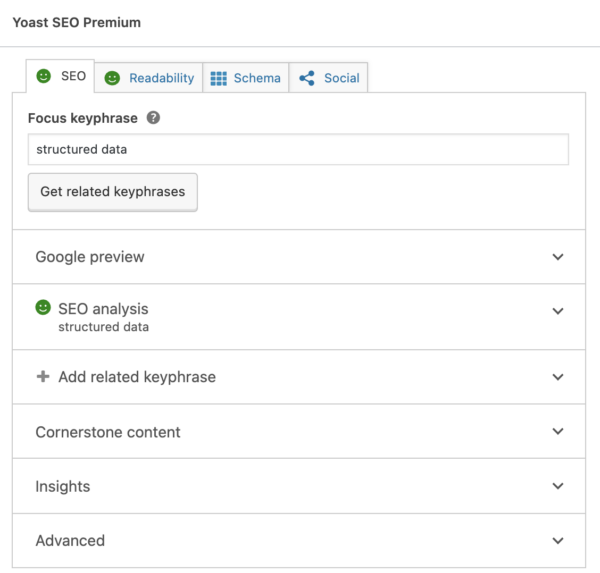
3. Google Analytics
Google Analytics is a free tool with some paid premium features. Google Analytics creates reports with your data sample. It performs various audits like channel reports which have information on where your visitors are from and provides information about the most effective content sources.
Landing page reports which are real-time performance reports. New and returning visitor reports tell the response to your content by the visitors. Using this information from Google Analytics, you can conduct a content audit
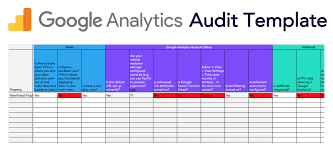
4. WOORANK
The WOORANK content auditor is a very easy-to-use tool. It performs auditing with a visual traffic light system. It analyses the website and suggests improvements. It records the overall SEO performance as a score out of 100. The tool has a free and paid version starting from $49 per month.
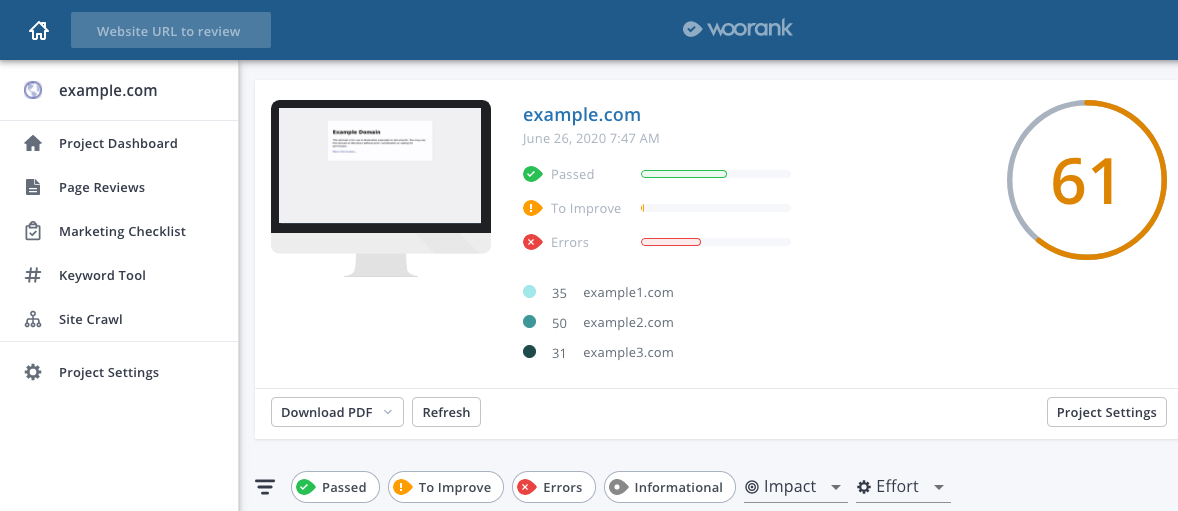
5. Grammarly
Grammarly is one of the best tools for content auditing. It analyzes and determines the quality and grammar of the written matter. In addition, the premium version of the tool provides other audits like readability, word count, etc.
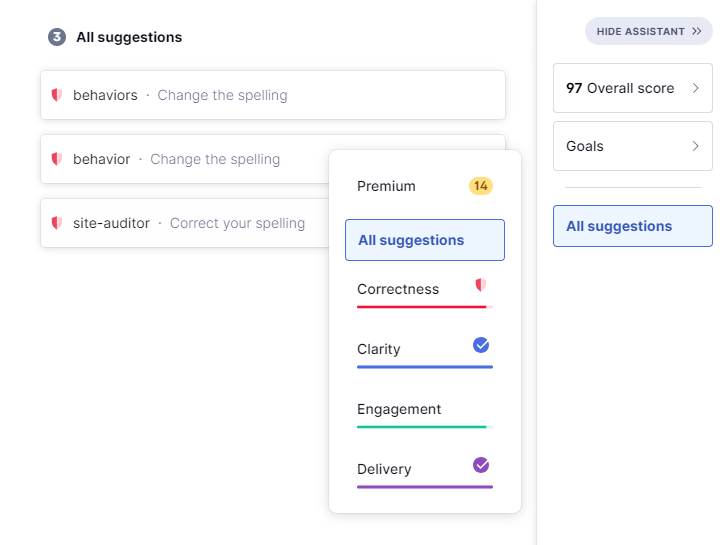
6. Hemingway
Unlike Grammarly, Hemingway focuses on readability and sentence formation. It checks the use of active and passive voice and the delivery of thoughts through the sentence. Both Grammarly and Hemmingway are complementary pairs that enhance the quality of the content.
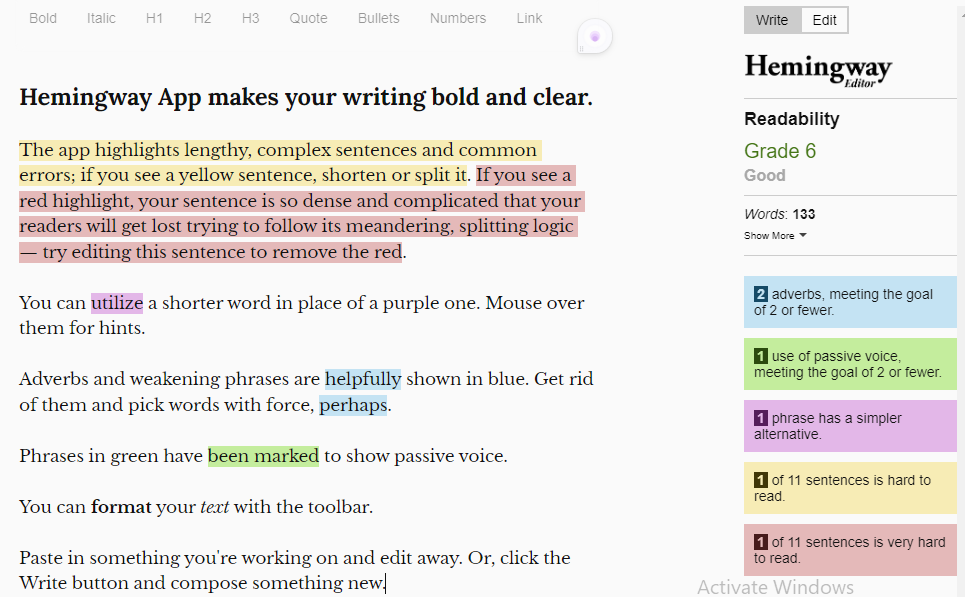
7. Google Search console
Google search console is another free SEO audit tool. It is a very effective tool and easy to use. It detects all the errors and flaws in your content, for example, broken links, user behavior, page loading speed, and more. Google search console is the ultimate tool to perform any SEO best practices like keyword research, technical SEO audits, image optimization audits, etc.
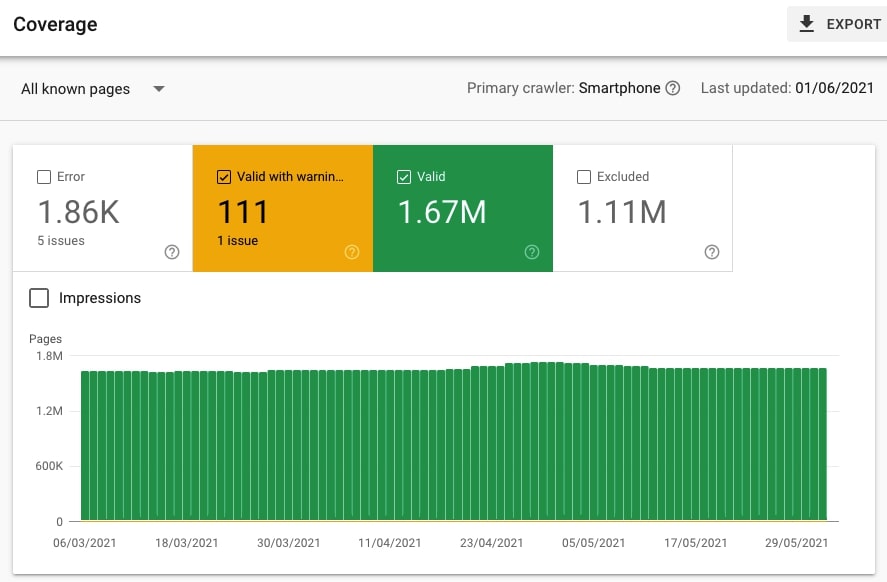
8. SEMrush
SEMrush content audit tools allow you to manually audit and compare your and competitors’ website to fill in the content gap and get more content opportunities. It provides an in-depth analysis of your content and gives suggestions for improvements.
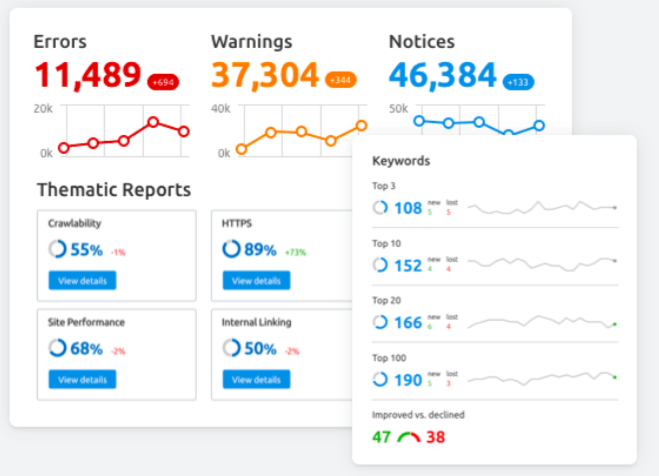
9. DeepCrawl
Deep Crawl conducts deep crawling surveys by a cloud-based system. You can do many website crawls using this easy tool. The tool also provides reports on competitors’ content and site structure. These reports will help you to fill in the content gaps.
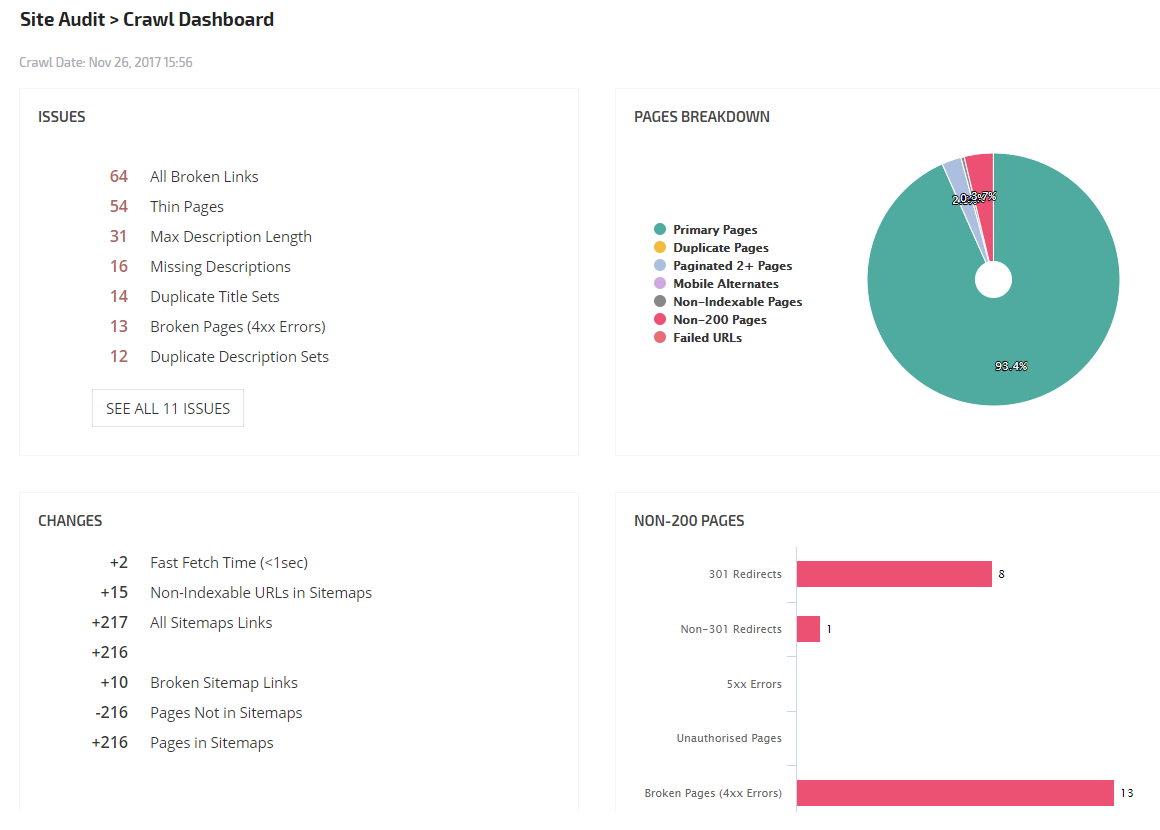
10. My site-auditor
My site auditor tool analyzes a website with 45 checks divided into six categories, including various content checkpoints like social media performance, semantic web design, etc. The drawback of this tool is that it focuses on HTML sitemaps instead of XML sitemaps. It analyzes and optimizes the web page for the targeted keywords.
11. Copyscape
Copyscape is an online piracy detection tool. It checks your original content first and then scans the internet to detect who is stealing and duplicating content. It uses Google web API and some algorithms to find which content is transformed from its original form.
